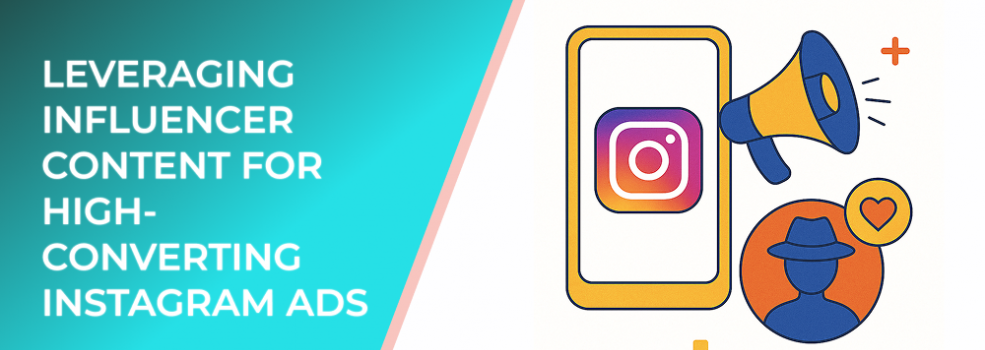Influencer content has proven to be one of the most effective types of creative for Instagram advertising. People are naturally drawn to authentic, relatable visuals rather than polished brand campaigns. According to Meta data, ads featuring creators can drive up to 54% higher engagement compared to standard brand ads. Influencer posts feel more like genuine recommendations than sales pitches, which builds trust and helps users make quicker purchase decisions.
For e-commerce brands, the combination of influencer credibility and paid distribution through Instagram Ads creates a powerful performance formula. The key is knowing how to structure and optimize these ads for conversions.
Step 1: Choose the Right Influencers for Ad-Ready Content
Selecting influencers goes beyond follower count. Focus on these factors:
-
Audience alignment: Choose influencers whose followers overlap with your target customer base.
-
Engagement rate: A smaller creator with a 5–10% engagement rate often outperforms a larger account with 1–2%.
-
Content style: Look for influencers whose visuals naturally match your brand tone and aesthetic.
-
Authenticity: Prioritize creators who genuinely use and enjoy your product, as audiences can spot forced partnerships instantly.
You can use LeadEnforce to analyze and target audiences that follow similar influencers, helping you identify relevant niches for your campaigns.
Step 2: Repurpose Influencer Content for Ads
Influencer-generated content (IGC) can be repurposed into ad creatives that look native to the platform. Unlike studio-shot visuals, influencer content blends into users’ feeds and feels less disruptive.
Here’s how to make the most of it:
-
Use short-form videos: Reels-style videos or story clips perform well in both feed and story placements.
-
Add subtle branding: Incorporate your logo or product name naturally without breaking the authentic tone.
-
Test different formats: Turn influencer testimonials into carousel ads or before-and-after visuals.
-
Focus on storytelling: Ads that show transformation or real-life usage often convert better than direct product shots.
According to Influencer Marketing Hub, influencer video ads can increase purchase intent by up to 85% when compared to traditional brand campaigns.
Step 3: Set Up Ads Using Influencer Handles (Branded Content Ads)
Facebook and Instagram allow you to run Branded Content Ads, where your ads appear under the influencer’s handle. This setup maintains authenticity while giving you full control over targeting and optimization.
To do this:
-
Ensure the influencer grants you advertising permissions in Meta Business Manager.
-
Create a campaign under your Ads Manager using their post or story.
-
Monitor metrics like engagement, CTR, and conversions directly from your dashboard.
This hybrid approach—creator trust with brand control—often delivers the best results for direct-response campaigns.
Step 4: Optimize Creatives and Audience Targeting
Once you launch, analyze performance by creative type and audience segment. UGC-style influencer ads typically perform best with:
-
Lookalike audiences based on your purchasers or website visitors.
-
Interest-based targeting around similar influencers or related product categories.
-
Retargeting campaigns for users who engaged with influencer content but didn’t convert.
According to Meta data, ads that feature creators can lower cost-per-acquisition (CPA) by 20–30% when compared to regular product ads.
Step 5: Measure and Scale What Works
Track performance using key metrics like ROAS, CTR, and conversion rate. Identify which influencers’ content performs best, then use it across multiple campaigns.
You can also collaborate with the same influencer for seasonal campaigns, maintaining consistency while expanding reach through LeadEnforce’s audience-building tools. Once you find a winning combination of influencer, creative, and audience, scale your ad spend gradually while testing new variations.
Final Thoughts
Leveraging influencer content in your Instagram ads isn’t just about aesthetics—it’s about building credibility and relatability that converts. The combination of real voices, authentic visuals, and precise audience targeting can transform a good campaign into a great one.
Start small, analyze results, and refine your approach. Over time, influencer-driven ads will not only enhance your conversion rate but also strengthen your brand’s connection with its audience.

